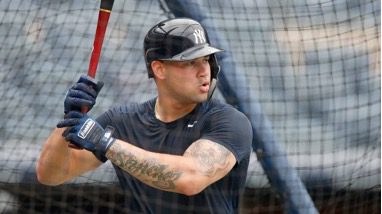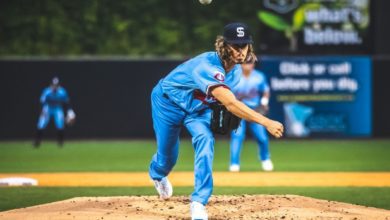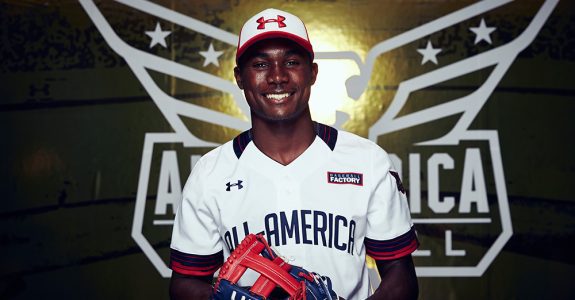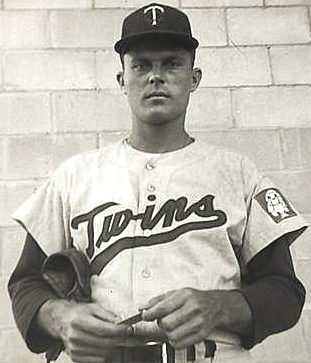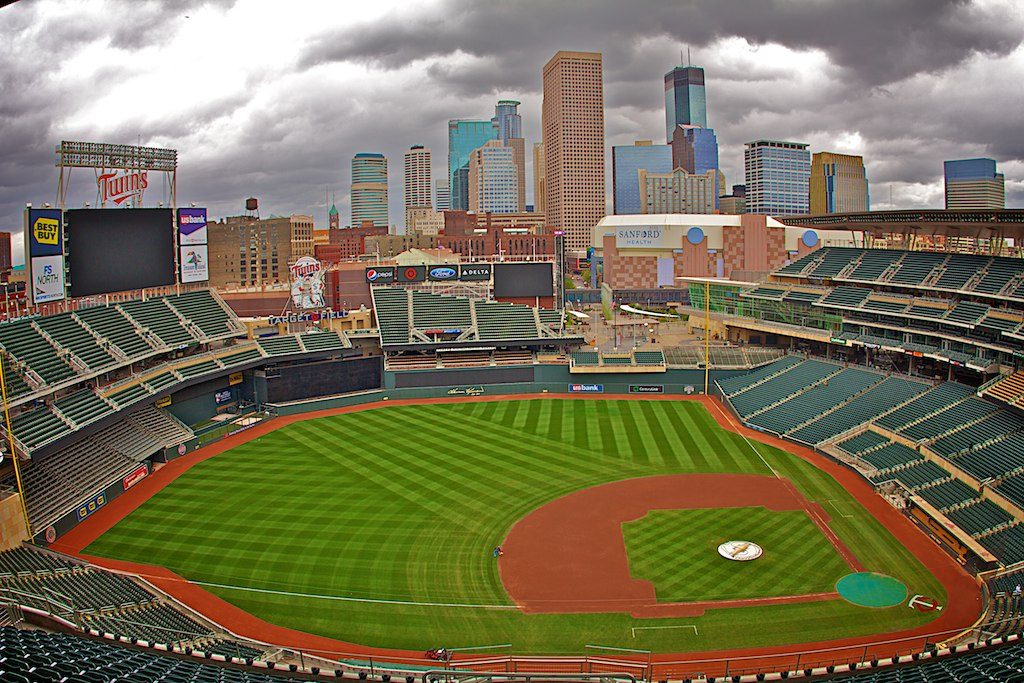

Target Field opened in 2010, and the expectations were high. Coming off yet another short American League Division Series appearance in 2009, fans were left wanting more. And the Minnesota Twins delivered, mostly by increasing the payroll significantly. Between the better on-the-field product and the novelty of Target Field, it’s no surprise that the Twins sold out nearly every home game that season. Players like Joe Mauer, Jim Thome, Michael Cuddyer and Delmon Young all had solid campaigns to help lead the way.
Despite the fact that the Twins had a fantastic record at Target Field that season, going 53-28 — good for the third best home record in the majors — one thing became abundantly clear: this team had difficulty hitting home runs in their own ballpark. In 2009, the final year at the Metrodome, the Twins hit 96 home runs there, which was tied for 10th best in baseball. Notably, this was before the team signed Thome as its resident slugger. But then Target Field happened. The Twins hit only 52 home runs at Target Field in 2010, good for 28th in baseball. It’s a significant drop.
The Twins weren’t the only victim of Target Field’s power-draining ability. In fact, ESPN’s Home Run Tracker notes that, in 2010, Target Field surrendered 1.43 home runs per game (116 total), good for fourth lowest in baseball. 2011 wasn’t much better. There were 126 home runs hit at the Metrodome’s successor, which averaged out to 1.56 per game. This was the ninth lowest total in baseball.
Not surprisingly, some Twins players began to voice their concerns. After the 2010 season, Justin Morneau stated, “Right center to left center is ridiculous,” and claimed that it was nearly impossible for batters to hit an opposite field home run in Minnesota. Cuddyer, who had been one of the more powerful hitters in the Twins’ lineup, hit only 10 home runs at Target Field in 2011, after hitting seven there in 2010. By comparison, Cuddyer hit 18 dingers at the Dome in 2009. Clearly, it wasn’t simply a mistaken perception that Target Field was tough on hitters or favored pitchers (though in fairness, some players, such as Jose Bautista, didn’t seem intimidated by the new stadium).
Thome and Cuddyer left Minnesota for friendlier confines (Cleveland and now Philadelphia for Thome, and the rarefied air of Colorado for Cuddyer). Even former Twin Jason Kubel grumbled about the difficulty of going yard at Target Field. Kubel left Minnesota this past offseason, heading west to Arizona, where the ball travels pretty well in that desert air. Maybe these players were eager to depart for other reasons, but if you earn your salary predominately on your ability to hit for power, and your place of employment just happens to be extremely tough on power hitters, it’s tough to think that Target Field wasn’t a factor in their decisions.
The Twins organization, for its part, has suggested that it is not willing, at present, to bring in the fences at Target Field. In its defense, there are only two years of data on the stadium. That only amounts to 162 regular-season games. Importantly, however, the New York Mets eventually listened to player concerns — and reviewed the objective data — and moved their fences in, as much as 12 feet in some areas, in time for the 2012 season. Clearly then, there’s precedent for these relatively minor adjustments, even in newer ballparks.
For the Twins, in my opinion, there are three possible courses of action on this issue: Move the fences in and build a lineup designed around power, albeit at the expense of some of the starting pitching; keep the fences where they are and make moves aimed at acquiring players with speed and gap power; or keep the fences where they are and try for a combination of speed and power. It seems that the Twins, at least for the short term, have taken the third approach. By signing players such as Josh Willingham and Ryan Doumit — guys who can hit the ball out of any ballpark — the Twins suggested that it was necessary to at least attempt to replace the power lost by the departure of Kubel, Thome, Young and Cuddyer.
Unfortunately, though, Willingham and Doumit are no more powerful than the players they were hired to replace. Will they suffer the same consequences once they start playing at Target Field? Willingham came to Minnesota via Oakland, one of the most difficult places for power hitters. He could do well at Target Field. Doumit played in Pittsburgh his entire career. In 2011, PNC Park only surrendered 1.42 home runs per game, good for fourth lowest in the National League. Like Willingham, Doumit could see his power numbers remain steady at Target Field, but it’s tough to imagine them increasing.
As long as I’m discussing new Twins players, what about Mauer, the face of the franchise and all-around good guy? Whether it’s the result of Target Field, injuries or both, his power has dwindled. After hitting 16 (of a total 28) home runs at the Metrodome during his 2009 MVP campaign, Mauer hit only one home run at Target Field in 2010 (out of nine total). He failed completely to reach the bleachers at Target Field in 2011, but hit only three home runs total in a disappointing and injury-plagued season. Perhaps cavernous Target Field has gotten into Mauer’s head?
So what should the Twins do? Out of the three choices I outlined, I think the answer lies at one of the extremes. The team should either move the fences in and seek to acquire more power hitters, thus exchanging defense in favor of power and knowing that the pitching staff will be giving up more home runs unless it is comprised of pitchers that induce ground balls, or leave the fences where they are and acquire more players with speed, with only a few guys in the lineup that you expect to hit 20 or 30 home runs.
In this situation, players like Denard Span, Alexi Casilla and Ben Revere could do damage without ever leaving the yard. Perhaps a perfect player in this second scenario is a prospect like Joe Benson, an outfielder who projects as having some power, but also is one of the fastest players in the organization. Under this plan, pitchers like Scott Baker, who, when at his best induces fly balls, would be successful, and the defense presumably would be solid with such speedy players manning the real estate between the foul lines.
For the time being, though, it seems like the Twins have taken the middle ground by leaving the dimensions the same, acquiring a few players with power and a few more with speed. Building Target Field from the ground up, the Twins had the opportunity to mold the team to its home. It almost worked in 2010. I will always wonder what would have happened if Morneau had not suffered a concussion in July of that year, and instead had continued the torrid campaign he had started that season.
Similarly, Mauer, though healthy enough to play, was plagued by nagging injuries to the point where he was but a fraction of his healthy self by the time the Twins traveled to the Bronx to face the Yankees in the playoffs. The approach the Twins took to building their lineup to suit Target Field worked in the sense that the Twins reached the playoffs in 2010, but it definitely didn’t work in 2011, when nothing much worked at all.
I think that 2012 will be a determinative year: The home run numbers will either improve, or it will be more of the same, with players being unable to hit the ball out of the stadium between left center and right center. If that’s the case, then the early numbers were probably accurate and the Twins should strongly consider moving the fences in. With $161 million still owed to Joe Mauer alone, a lefty who has lost his ability to hit home runs — especially to opposite field, which used to be his prime location — moving the fences is something that actually might be in the Twins’ financial interest if they want to get the best return on value for their franchise player.


